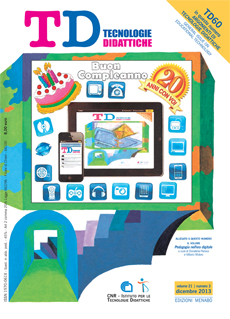A constructivist approach for introducing the figurative language of poetry
Main Article Content
Abstract
Article Details
Section
Authors who publish with this journal agree to the following terms:
- Authors retain copyright and grant the journal right of first publication with the work simultaneously licensed under a Creative Commons CC BY 4.0 Attribution 4.0 International License.
- Authors are able to enter into separate, additional contractual arrangements for the non-exclusive distribution of the journal's published version of the work (e.g., post it to an institutional repository or publish it in a book), with an acknowledgement of its initial publication in this journal.
- Authors are permitted and encouraged to post their work online (e.g., in institutional repositories or on their website) prior to and during the submission process, as it can lead to productive exchanges, as well as earlier and greater citation of published work (See The Effect of Open Access)
References
Brooks J., Brooks M. (1993). The case for constructivist classrooms. Alexandria, VA, USA: Association for Supervision and Curriculum Development.
Borin P. (2005). La mano e la mente. Roma, IT: Carocci Faber.
De Mauro T., Pedace P., Stasi A. G. (eds.) (1996). Teoria e pratica della scrittura creativa. Nardò (LE), IT: Ed. Controluce.
Demetrio D. (1996). Raccontarsi. L’autobiografia come cura di sé. Milano, IT: Raffaello Cortina.
Dodge E., Lakoff G. (2006). Image schemas: from linguistic analysis to neural grounding. In B. Hampe (ed.). From perception to meaning: Image schemas in cognitive linguistics. Berlino, DE: Mouton de Gruyter.
Gagnon G. W. Jr, Collay M. (2001). Designing for learning: six elements in constructivist classrooms. Thousand Oaks, CA, USA: Corwin Press.
Gibbs R. W. Jr. (2005). La poetica della mente. Viterbo, IT: Sette Città.
Grove D. J. (1989). Metaphors to heal by (audio tape set and workbook). Eldon, MO, USA: David Grove Seminars.
Johnson M. (1990). The body in the mind. Chicago, IL, USA: The University of Chicago Press.
Lakoff G., Johnson M. (1998). Metafora e vita quotidiana. Milano, IT: Bompiani.
Larocca F. (1983). Oltre la creatività: l’educazione. Brescia, iT: La Scuola.
Longo G. (2011). Cognizione ed emozione. Processi di interpretazione del testo letterario dalle neuroscienze cognitive all’educazione emotiva. Lecce, IT: Pensa Multimedia.
Lorenzetti L. M. (1995). La dimensione estetica dell’esperienza. Milano, IT: FrancoAngeli.
Mazzara G. (2003). Parole che nascono libere. La scrittura creativa per la crescita e la terapia. Milano, IT: FrancoAngeli.
Panksepp J. (1998). Affective Neuroscience: The Foundations of Human and Animal Emotion. New York, NY, USA: Oxford University Press.
Papert S. (1971). Teaching children thinking. AI Memo 247, Logo Memo 2. Cambridge, MA, USA: MIT Artificial Intelligence Laboratory.
Papert S. (1980). Mindstorms: Children, computers and powerful ideas. New York, NY, USA: Oxford University Press.
Perkins D. (1986). Knowledge as design. Hillsdale, NJ, USA: Lawrence Erlbaum Associates.
Pinker S. (2007). The stuff of Thought. Language as a window into human nature. New York, NY, USA: Viking.
Rodari G. (1973). Grammatica della fantasia: Introduzione all’arte di inventare storie. Torino, IT: Einaudi.
Singer J. L. (1974). Imagery and daydream methods in psychotherapy and behavior modification. New York, NY, USA: Academic Press.
Zamponi E. (1986). I draghi locopei. Torino, IT: Einaudi.

